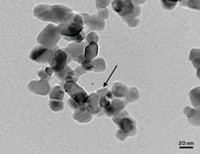Advertisement
Grab your lab coat. Let's get started
Welcome!
Welcome!
Create an account below to get 6 C&EN articles per month, receive newsletters and more - all free.
It seems this is your first time logging in online. Please enter the following information to continue.
As an ACS member you automatically get access to this site. All we need is few more details to create your reading experience.
Not you? Sign in with a different account.
Not you? Sign in with a different account.
ERROR 1
ERROR 1
ERROR 2
ERROR 2
ERROR 2
ERROR 2
ERROR 2
Password and Confirm password must match.
If you have an ACS member number, please enter it here so we can link this account to your membership. (optional)
ERROR 2
ACS values your privacy. By submitting your information, you are gaining access to C&EN and subscribing to our weekly newsletter. We use the information you provide to make your reading experience better, and we will never sell your data to third party members.
Environment
Tracing Sunscreen’s Reaction Dynamics
After exposure to UV radiation, cinnamate-based chromophores can remain excited
by Elizabeth K. Wilson
July 21, 2014
| A version of this story appeared in
Volume 92, Issue 29

The most common UV-B filter used in sunscreens is the cinnamic acid derivative 2-ethylhexyl-4-methoxycinnamate (EHMC), which is supposed to protect skin by converting the sun’s harmful UV radiation to heat. But UV-B absorption by EHMC can initiate unwanted chemical reactions, create harmful by-products, and generate reactive oxygen species—defeating the compound’s protective purpose. Now, Wybren J. Buma of the University of Amsterdam and colleagues have used gas-phase spectroscopy to follow the excited-state dynamics of EHMC and a simpler analog of EHMC, methyl-4-methoxycinnamate. They found that the electronically excited chromophores do not immediately return to the ground state. Instead, they take an energetic pathway to another excited state, which slows down energy dissipation by a factor of more than 10,000 (J. Phys. Chem. Lett. 2014, DOI: 10.1021/jz501140b). But the authors have also found a potentially easy fix: add water. A polar environment interferes with the energetics of the chromophore’s various pathways, making a return to ground state more favorable. “One might develop much better sunscreens if one simply puts the active component in a watery environment,” Buma tells C&EN.





Join the conversation
Contact the reporter
Submit a Letter to the Editor for publication
Engage with us on Twitter